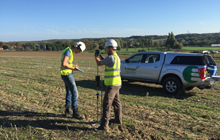
The government is consulting on a streamlined form of environmental assessment for planning applications, including for nationally significant projects. Under the new system, which is contained in the Levelling up and regeneration bill, environmental outcomes reports (EORs) will replace environmental impact assessments (EIAs).
The consultation document states that the "fear of legal challenge" associated with the current assessments has resulted in them becoming "repetitive, voluminous and cumbersome". It adds: "Many find the size of reports daunting, [the] methodologies difficult to follow and conclusions on ‘likely significance’ subjective, vague and non-committal." It also states that there is confusion among users on the definition of ‘competent experts’ under the current system.
The consultation is now seeking views on clearer criteria for screening and scoping, how to apply the mitigation hierarchy to plans, simplified monitoring and reporting and the length of time that will be required to introduce a new system, likely to range between six months and two years.
All projects in sensitive areas, such as protected sites, will require EORs. They will be expected to deliver environmental improvements in line with biodiversity net gain and local nature recovery strategies. The new legislation includes the mitigation hierarchy — avoid, mitigate, compensate — for the first time.
These changes replace provisions under the EU’s Environmental Impact Assessment (EIA) and Strategic Environmental Assessment (SEA) directives. The Levelling up and regeneration bill contains a ‘non–regression clause’, promising that it will not lead to a diminution of current environmental protections and standards.
